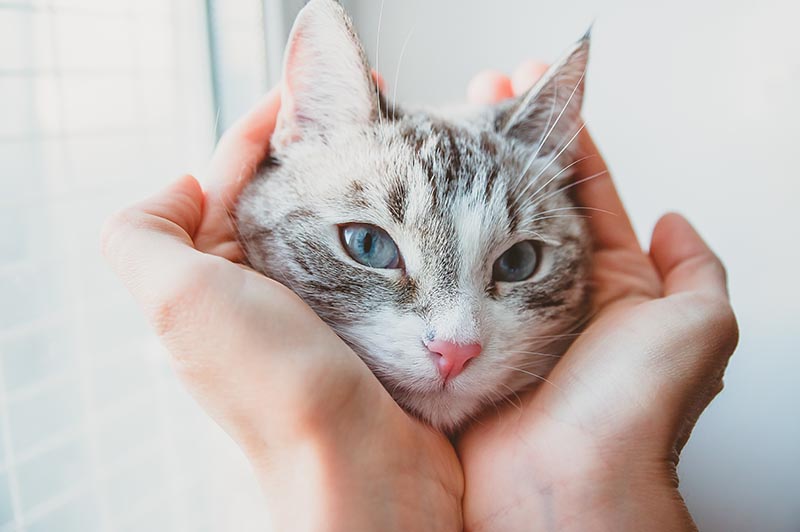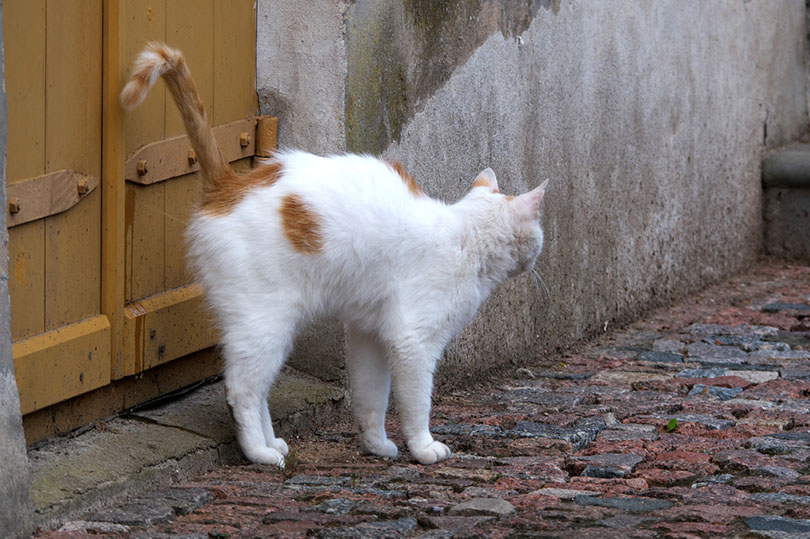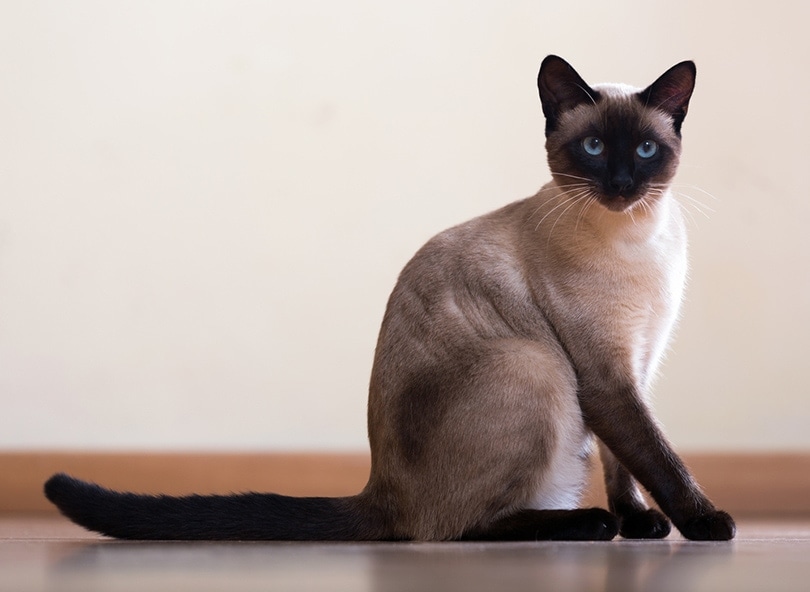10 Interesting Black Cat Facts: Myths Explained

Updated on
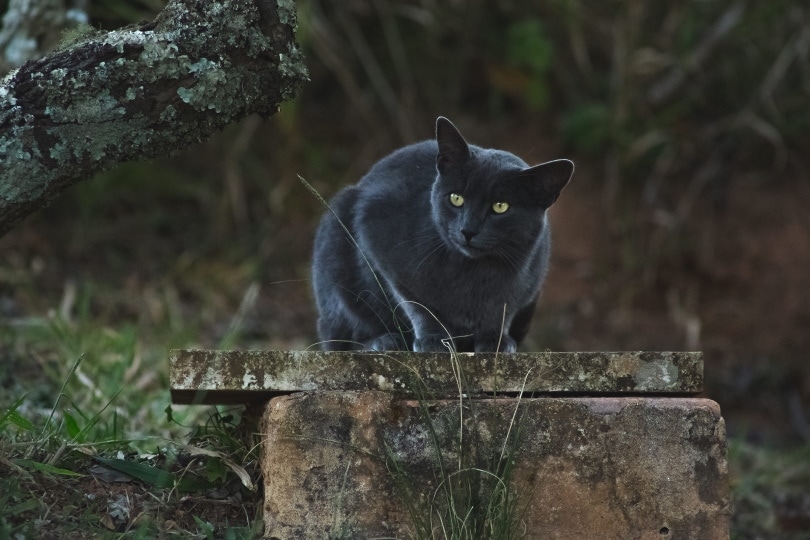
Black cats are friendly and intelligent creatures, but they’ve been vilified throughout history because of irrational fears. However, black cats are incredibly interesting, and there are some fascinating facts about them. In this article, we will explore 10 black cat facts that you can arm yourself with on any quiz night. In addition, you will learn about how harmful myths led to black cat killings in the past.
The 10 Facts About Black Cats
Anyone who has a special place in their hearts for black cats will enjoy reading this list of facts. Look at our list and choose one of the most interesting facts to tell your friends and family.
1. Black Fur Comes from a Dominant Gene
Why are there so many black cats in the world? Black is a dominant feline gene, and it’s displayed in 22 domesticated breeds. If one parent has the gene for a black coat, some of the offspring can be black. The black color in cats is not only present in domesticated species, but it is also common in wild cats.
The term “black panther” is misleading. Black panthers are not separate cat species but are black jaguars or black leopards. Black coats are dominant alleles in jaguars and recessive alleles in leopards.
2. Black Cats Can Change Color
Exposure to sunlight can lighten the hair color of humans and animals. Black cats with a Tabby gene that spend time in the sun can develop rust-colored coats. UV light destroys melanin, and sun-loving black cats can see their coats fade to lighter shades.
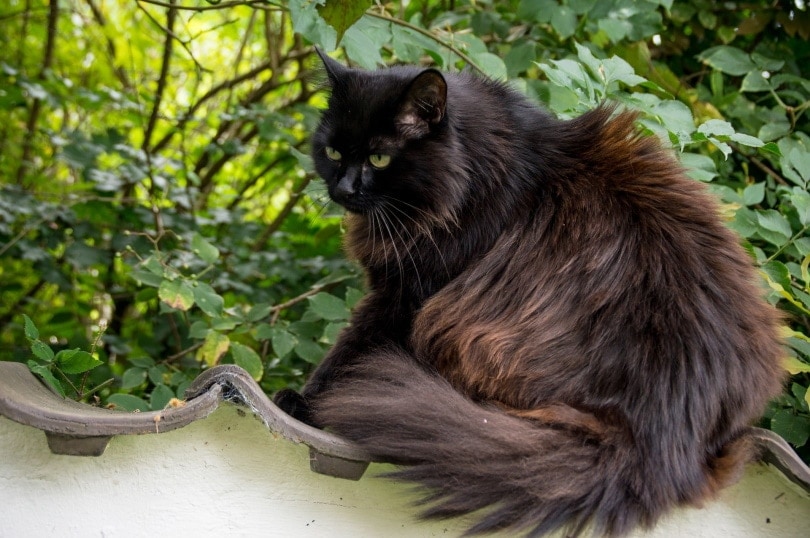
3. The Wealthiest Cat in History Was Black
Some people consider black cats unlucky but probably have not heard about the richest cat in history. In 1988, a reclusive antique dealer, Ben Rea, passed away and left his beloved black cat, Blackie, a fortune. Blackie inherited $12.5 million and set a Guinness World Record for the wealthiest cat. Blackie was the last survivor of 15 cats that once roamed around the millionaire’s mansion.
Three cat charities received the money on the condition they would care for Blackie. Apparently, Rea valued his black cat and employees more than his family. Rea left his family out of his will, but he bequeathed a residence to his friend and left money to his plumber and gardener.
4. Black Cats Are Adopted More Frequently
Although a myth surrounding black cat adoptions has convinced some that black cats are less likely to be adopted, the opposite is true. According to the ASPCA, since black is a dominant gene in cats, a high percentage of black cats are adopted every year. However, this also means that several black cats are also euthanized every year in shelters.
Another myth claims that animal shelters prohibit black cat adoptions before Halloween for fear that Satanists and cultists will use black cats for ritual sacrifice. In 2007, National Geographic explored the myth and found no evidence to support the rumors.
If shelters kept people from adopting during the last weeks of October, more black cats would die. Animal rescue centers and charity groups encourage adoptions all year, and they disregard pleas from superstitious animal lovers to keep black cats in shelters longer.
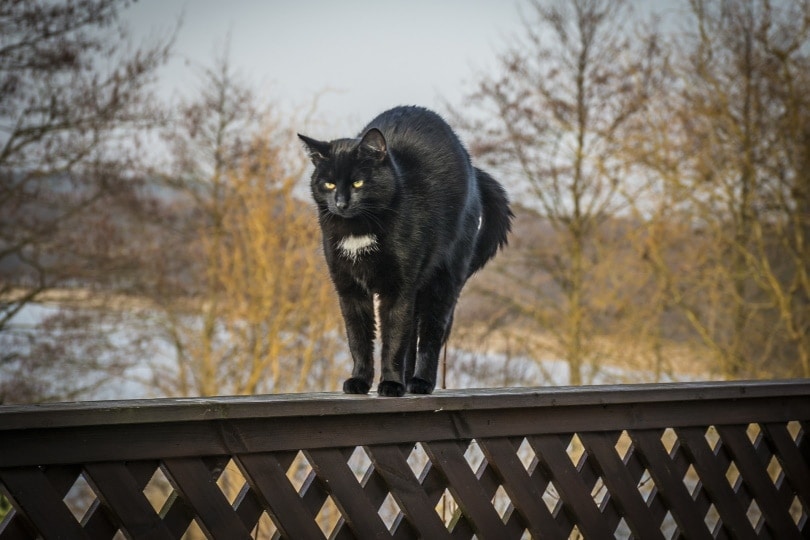
5. The United States and Great Britain Have Black Cat Holidays
Not every animal has an appreciation day dedicated to it, but black cats have two. You can celebrate Black Cat Appreciation Day on August 17th in the United States or recognize National Black Cat Day on October 27th in England.
6. Hollywood Appreciates Black Cats
Black cats are familiar sights in films and television programs. When the filmmakers of Trilogy of Terror needed to audition black cats for their Edgar Allen Poe segment in 1961, a sizable mob showed up with their pets.
The audition attracted 152 cats and their anxious owners. Some cats were disqualified for having lighter colors on their noses or feet. The studio disappointed the pet owners by hiring a professional black cat that was not part of the audition group.
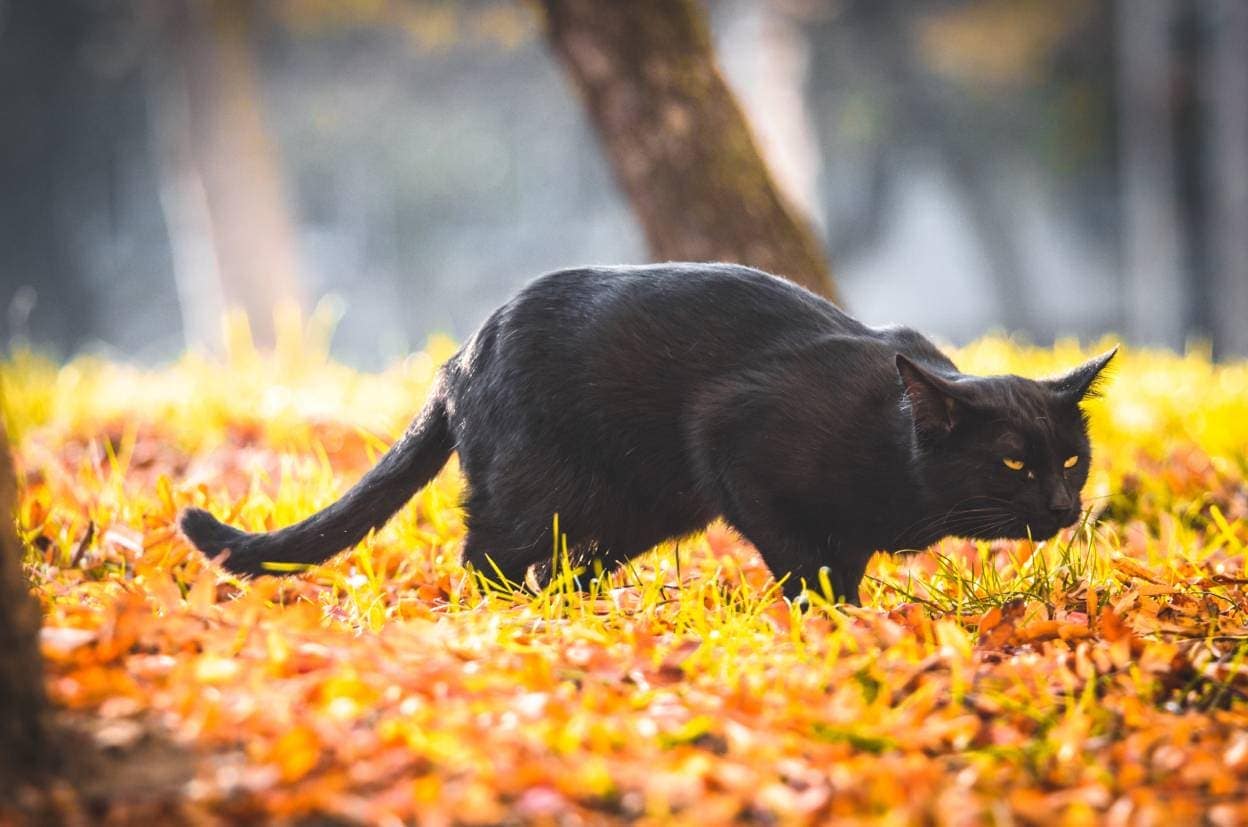
7. Bombay Cats Are Completely Black
Of all the black coat varieties displayed in feline breeds, the Bombay is the only one that meets show standards (according to the Cat Fanciers’ Association) when it’s entirely black. Bombay cats are gorgeous, exotic-looking felines with black noses and paws. They typically have stunning green eyes but can also have amber or yellow eyes.
The American Bombay cat was created by mixing a sable Burmese and a Black American Shorthair, and the British Bombay was produced by mating a Black Domestic Shorthair with a Burmese. Although they have slightly different heritages, the American and British cats share the same characteristics and are practically indistinguishable.
8. Black Cats Are Friends of Sailors
Black cats developed a bad reputation with land-based residents but fared much better on the high seas. Perhaps black cats were considered lucky to sailors because their coats made them more suited to hunt nocturnal pests on marine vessels.
One of the most famous nautical felines was a black cat named “Blackie” who accompanied the HMS Prince of Wales during World War II. Blackie made international news when he was greeted by England’s greatest cat lover Winston Churchill. The Prime Minister’s visit convinced the ship’s crew to rename the cat “Churchill.”
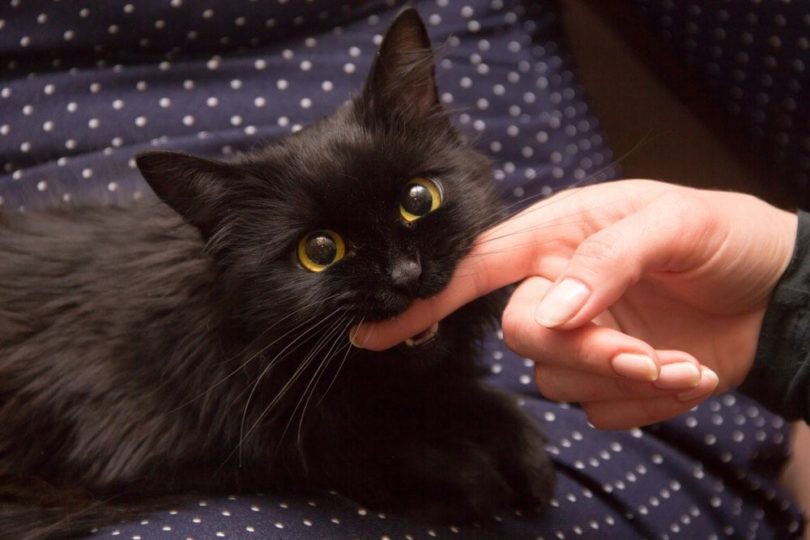
9. Black Cats Contribute to Vital Medical Research
Medical researchers study various animals and their similarities to humans to develop new treatments for infections and diseases. Regardless of their past, black cats may be better luck for humans than ever imagined.
The genetic mutation responsible for the black color in cats also gives felines an enhanced resistance to disease. In 2003, scientists discovered a link between the cats’ mutated genes and the genes in humans that cause HIV.
10. Lykoi is a New Cat Breed Resembling a Black Werewolf
The Lykoi cat is a new experimental semi-hairless breed that first appeared in feral cat populations in 2010. The name Lykoi means “wolf cat” in Greek, and the title aptly describes the unusual-looking animal.
The black roan type of Lykoi was favored by breeders over other color coats, and they began breeding the feral cats with black domestic felines to increase the Lykoi population. Most Lykoi have thin black coats with white highlights that give them a werewolf-like appearance.
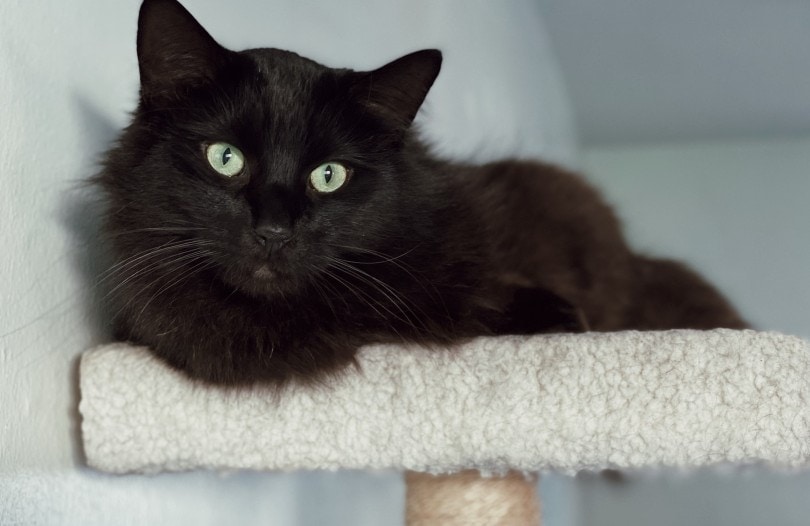
The Myths That Led to Black Cat Killings
Although they were considered symbols of divinity in ancient cultures, black cats developed a bad reputation during the onset of the Spanish Inquisition. After Pope Gregory IX issued his “Vox in Roma” in 1233, he convinced Christians that black cats were tied to Satan and occult activities.
The Catholic church wanted to eliminate the pagan cults threatening the church’s authority in Europe, and eventually, the movement spread to include witches who often favored keeping cats. Wicca followers were strongly connected to the natural world and adored cats, but it’s unclear why Christians believed they only kept black cats. When Christians killed witches for their beliefs, their unfortunate pets were also slaughtered.
In 1347, the black plague arrived in Europe, and soon, black cats were targeted as potential disease carriers. People killed the innocent creatures to reduce the spread of the epidemic, but the mass killings may have accelerated the disease. 14th-century doctors did not know that the disease was connected to the infected fleas on rodents, and with fewer black cats to hunt rats, the Black Death may have spread quicker.
Over 200 years later, the Pilgrims arrived in the New World, and the Puritan colonists promoted the danger of witches and their pet cats. Whether it was the cats’ connection to Satan, witchcraft, or bad luck, too many affectionate felines were killed by spreading false propaganda. Thankfully, the unluckiest cats in the world have thrived despite their turbulent history.
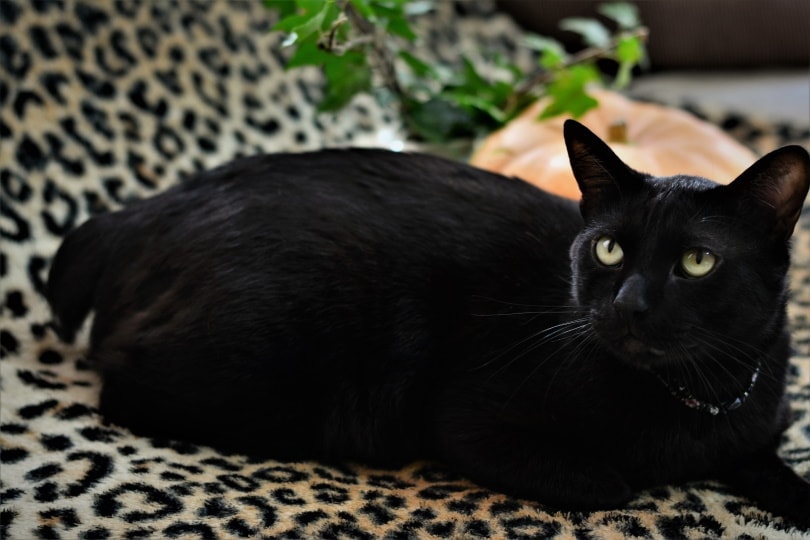
Conclusion
Before Europeans maligned the animals during the Middle Ages, ancient Egyptians regarded black cats as goddesses and protectors of women and childbirth. Myths and unfounded connections to the occult led many to kill black cats, but luckily, the felines survived the ordeal. Today, many black cat misconceptions have been refuted, although some people continue to avoid the cats on Halloween. Black cats are lucky for humans. They’re helping fight horrific diseases and continue to brighten the lives of cat lovers around the planet.
Featured Image Credit: Piqsels


